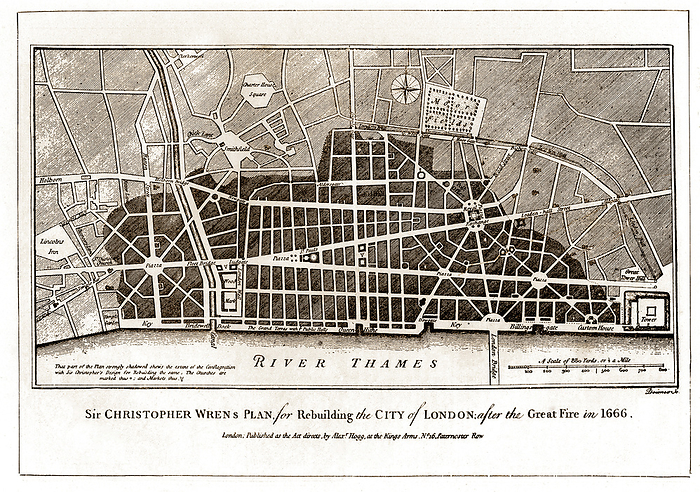
RM
Wren's plan after the great fire, illustration
Architect Sir Christopher Wren's plan for the rebuilding the city of London after the Great Fire in 1666. Wren, (1632-1723) , the famous English Baroque architect, was also an astronomer, geometrician and founder and president of the Royal Society. His plan included replacing the narrow and winding streets of old London with wider avenues. With a lack of financing it was not chosen by Charles II. However, he was commissioned to build his most famous building, St. Paul's Cathedral. This replaced the medieval church destroyed in the Great Fire. He also designed and built 53 London churches. Much of the land in the City of London was in private ownership. The winding streets of were quickly restored in rebuilt London by the owners of the land., by SHEILA TERRY/SCIENCE PHOTO LIBRARY

More
Top Categories
